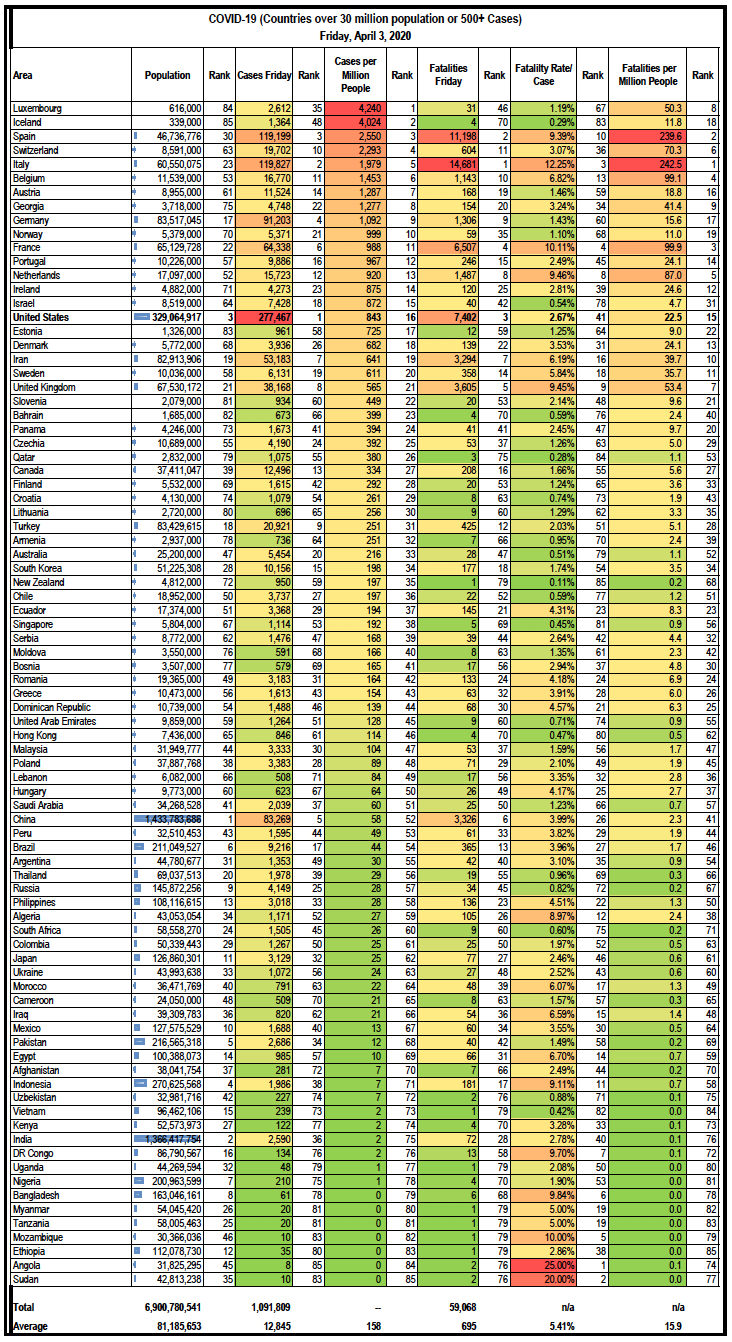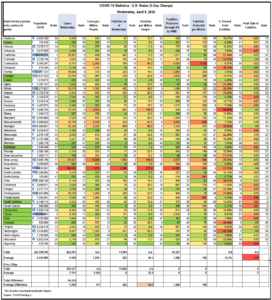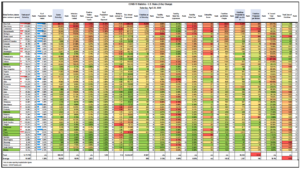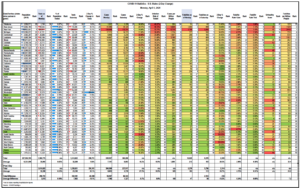HSP compiled the following COVID-19 Statistics for Countries over 30 million Population or 500+ Cases. This data stands as of Friday, April 3, 2020.
Scroll down to download this excerpt from HSP’s database.
Providing a number of visuals with different rankings. First is cases per million. Because we still don’t have perfect data about testing (ie some countries like Iceland test randomly while most others only test those who show symptoms), we have a mixed bag of implications and results. Iceland/Luxembourg have the highest infection rates, but low fatalities per infection and a mixed result on fatalities per capita. The others in the top are the top hot spots in Europe.
Fatality rate per case is another way I sorted the data. Worldwide figures are going up to now 5.4%, which says more about who is being tested (and the inability to catch up to the spread) than anything. In the randomized testing in Iceland, the fatality per case rate is only 0.29% and in exalted S. Korea with widespread testing, the rate is 1.74%. The U.S. rate has increased to 2.67%. Even Germany’s fatality rate per case has increased to 1.43%. Please note, countries that the media has been sometime praising for their contrarian strategy are not suffering greatly. Denmark’s fatality per case is 3.53% and their fatality rate per million people is higher than the U.S. It’s even worse in Sweden.
Fatality rate per infection is now hovering around 10% in many of the western and Southern European nations we often try to emulate: France, UK, Netherlands. Italy and Spain are closer to 12%. Small but quickly growing rates of infection are leading to high rates of death per infection across Africa and Asia.
In terms of fatalities per million, which is about the most important metric to consider, the U.S. is in 15th place, at 22.5 per million. As a comparison, Italy and Spain have rates more than 10x higher. This is a scary omen for us if we get to that rate, which would imply about 80,000 deaths. We are about 3 weeks (at least in our current hotspots) behind Italy and Spain and they are cresting, but sadly, still adding deaths each day. Some parts of our country are 1-3 weeks behind our current hotspots, so our states are acting like individual countries in Europe.
The final chart is sorted by new fatalities since Wednesday (2-day change). This is one ranking where the U.S. is not #1. France is, with 2,475 new deaths in 48 hours, compared with 2,292 for the U.S. France is 5x smaller than the U.S. and they are in their worst phase of fatalities, so it is conceivable that at the same milestone in the U.S.’s journey, we could have as many as 12,500 fatalities over a two-day period. Spain and Italy have crested and so are now adding fewer deaths per day. On the other hand, many other countries are spiking, including the UK and other northern and Western European countries.
How is Canada faring? Not as well as Australia, countries with much in common in terms of geography and population. Canada is tracking more like the U.S. and in fact had a jump in fatalities of 61% in two days versus 44% in the U.S. It will be fascinating to see how their curve plays out.
All the data points to a long slog for the world until treatments become available. Yes, wearing masks and social distancing will help slow the spread, but until we get some treatments, the spreading will continue and the destruction will continue. No country seems to have figured out a way to truly stop the spread, even though S. Korea seems pretty successful. I’m still a bit dubious, but we should look deeper there. I am a fan of the idea of wearing masks (and gloves) for those who need to get to work or interact in public.
I’ll post some hotel statistics that will remind you that there ARE a lot of people traveling and working to produce all the things you are still getting delivered to your house or apartment. If we truly shut down, everyone really would be in a panic. It hasn’t happened b/c the supply chains continue, many factories and food processing continue. This is all happening under the radar, but the data bears it out. These are people risking their health to keep the wheels in motion even though most of the rest of us are sitting safely at home. I hope they are being safe too! Prayers for all those suffering and all the nurses and doctors on the front lines! I cannot imagine going into work each day.



